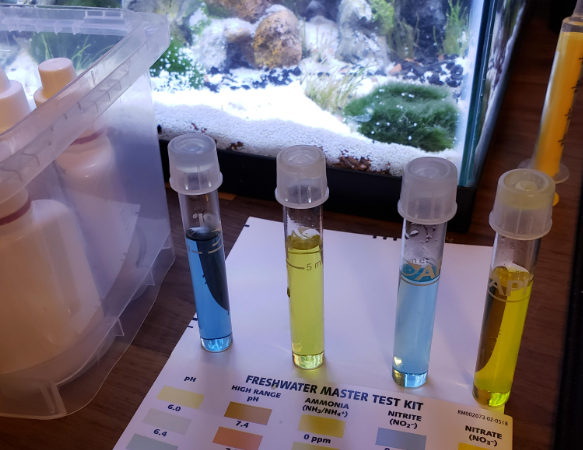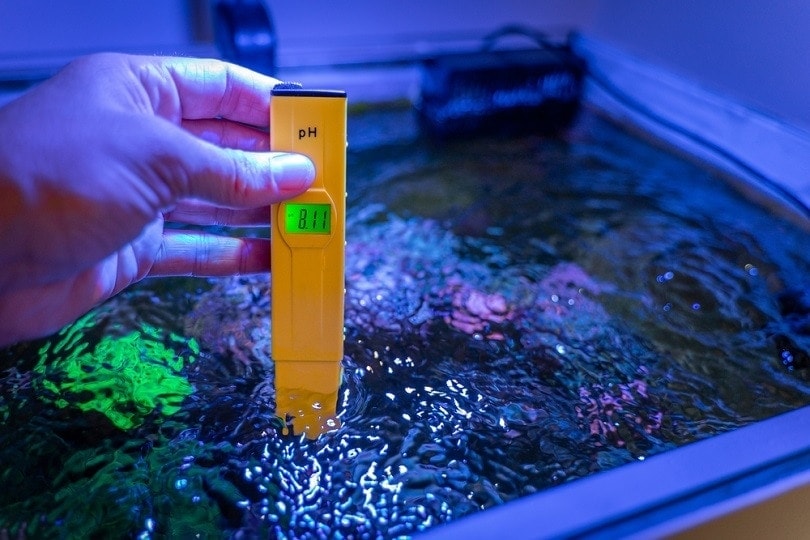Your aquarium’s pH level indicates the acidity or alkalinity of the water and plays a crucial role in the overall health and well-being of the aquatic organisms residing in the tank. To help maintain stable pH levels, many aquarium enthusiasts turn to baking soda as a potential solution. In this article, we will explore the effects of baking soda on pH levels in aquariums and whether it raises pH as commonly believed.

Understanding pH in an Aquarium
Before diving into the specifics of baking soda’s impact on pH levels, it’s important to have a clear understanding of what pH actually is. pH is a logarithmic scale ranging from 0 to 14, with 7 being considered neutral.
Values below 7 indicate acidity, while values above 7 indicate alkalinity. Most freshwater aquariums aim for a pH level between 6.8 and 7.8, which is considered slightly acidic to slightly alkaline.
Explaining the Role of Baking Soda in Aquariums
Baking soda, scientifically known as sodium bicarbonate, is a versatile household ingredient known for its ability to effectively raise pH levels in various applications.
In an aquarium setting, baking soda acts as a buffering agent, helping to stabilize the pH level and maintain a healthy balance within the water.
Its alkaline nature can help counteract acidic conditions, preventing rapid pH fluctuations that could be harmful to aquatic life.

Does Baking Soda Raise pH in an Aquarium?
The short answer is yes – baking soda can indeed raise pH levels in an aquarium. When added to the water, baking soda dissociates into sodium ions (Na+) and bicarbonate ions (HCO3-). These bicarbonate ions act as a pH buffer, resisting changes in the acidity or alkalinity of the water by neutralizing excess hydrogen ions (H+) or hydroxide ions (OH-).
By adding baking soda to the aquarium, its alkalinity increases, resulting in a rise in pH. However, it’s important to note that the extent to which baking soda affects the pH level will depend on the initial water parameters and the amount of baking soda added.
It is recommended to monitor the pH level closely and make adjustments gradually to avoid sudden and drastic changes that could stress the inhabitants of the tank.
How to Lower Your Aquarium’s pH
Lowering the pH in an aquarium can be essential for maintaining a healthy environment for certain fish species. While baking soda is typically used to raise pH, understanding how to manage and lower pH is equally important.
Adding tap water, which often contains impurities, can sometimes alter pH levels. Using pure baking soda or sodium carbonate (washing soda) should be avoided in this context, as they raise pH.
Instead, natural methods like adding driftwood or peat moss can help lower pH. Monitoring water chemistry regularly is crucial. If the tank water is too alkaline due to more baking soda or similar substances, performing partial water changes with soft water can help balance the pH. Ensuring stable water quality supports the well-being of your aquarium inhabitants.

Factors to Consider Before Using Baking Soda
While baking soda can be an effective tool for raising pH levels in an aquarium, there are a few important factors to consider before incorporating it into your maintenance routine.
These include the size of the tank, the current pH level, and the specific water requirements of the organisms inhabiting the aquarium.
It is advisable to conduct thorough research and consult with experts to ensure that baking soda is compatible with your specific setup.
Alternative Options to Raise pH in Aquariums
If baking soda is not suitable for your aquarium or you prefer alternative methods, there are several other options available to raise pH levels.
One common method is the use of crushed coral or limestone, which slowly leaches minerals into the water, thereby increasing alkalinity and pH.
Other options include using buffering products specifically designed for aquariums or incorporating natural additives such as peat moss or driftwood, which release tannins and organic acids that can help lower pH.
How to Properly Use Baking Soda in an Aquarium
If you decide to utilize baking soda to raise pH levels in your aquarium, it is crucial to follow the proper guidelines for its usage. Start by testing the current pH level of your tank, as this will serve as a baseline for making adjustments.
Then, calculate the precise amount of baking soda required based on the size of your tank and the desired pH increase. It is recommended to dissolve the baking soda in a separate container with aquarium water before adding it slowly into the tank, ensuring thorough mixing.
What Influences the pH in the Aquarium?
The pH in an aquarium is influenced by several factors, including the type of water used, the presence of certain chemicals, and the biological processes within the tank. Tap water often has varying pH levels and can impact the overall water chemistry.
Adding substances like pure baking soda or sodium carbonate (washing soda) can raise the pH, while natural elements like driftwood or peat can lower it.
The fish species kept in the tank also influence pH, as different species produce different levels of waste, affecting water quality. Soft water typically has a lower pH and may require adjustments using more baking soda to stabilize it.
Regular testing and monitoring of tank water ensure that the pH remains within the desired range, promoting a healthy environment for all aquatic life. If you need to adjust the pH up, you can add baking soda incrementally.

Risks and Precautions Associated with Using Baking Soda in Aquariums
While baking soda can be beneficial in maintaining pH levels, it is essential to be cautious and aware of potential risks. Overdosing on baking soda can lead to a rapid increase in pH, causing stress to the fish and other organisms.
Additionally, some species may have specific pH requirements, and altering the pH level too dramatically may adversely affect their health. Therefore, regular monitoring of pH levels and observing the behavior of the aquarium’s inhabitants is crucial to ensure a stable and suitable environment.
Conclusion
Overall, baking soda can be an effective tool for raising pH levels in aquariums. Its alkaline nature helps stabilize the water’s pH and maintain a healthy environment for aquatic organisms.
However, it is important to consider the specific requirements of your aquarium, monitor pH levels closely, and make adjustments gradually. Whether you choose to use baking soda or explore alternative methods, maintaining a stable pH level is vital for the overall well-being and thriving of your aquarium’s inhabitants.


